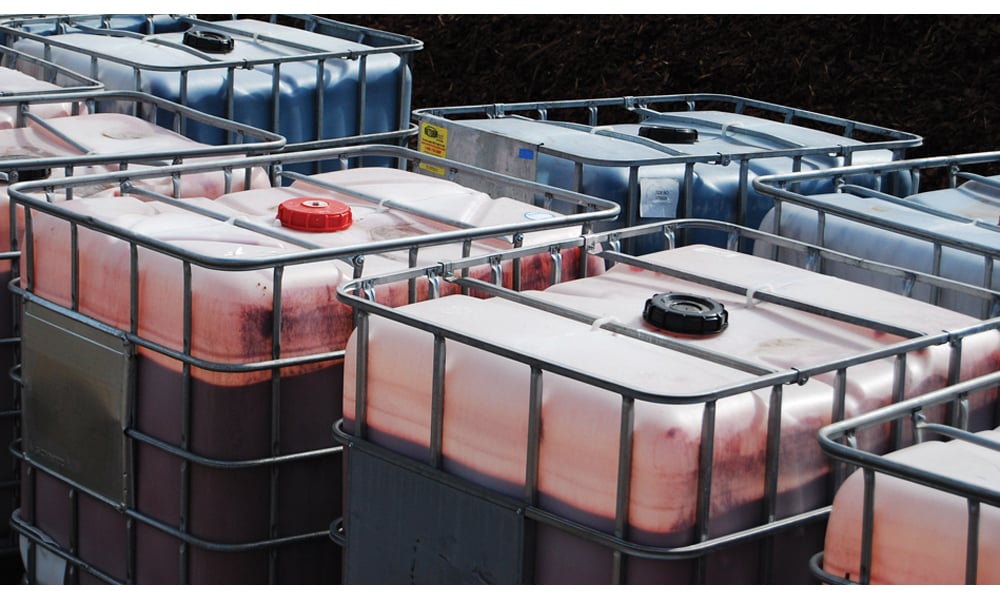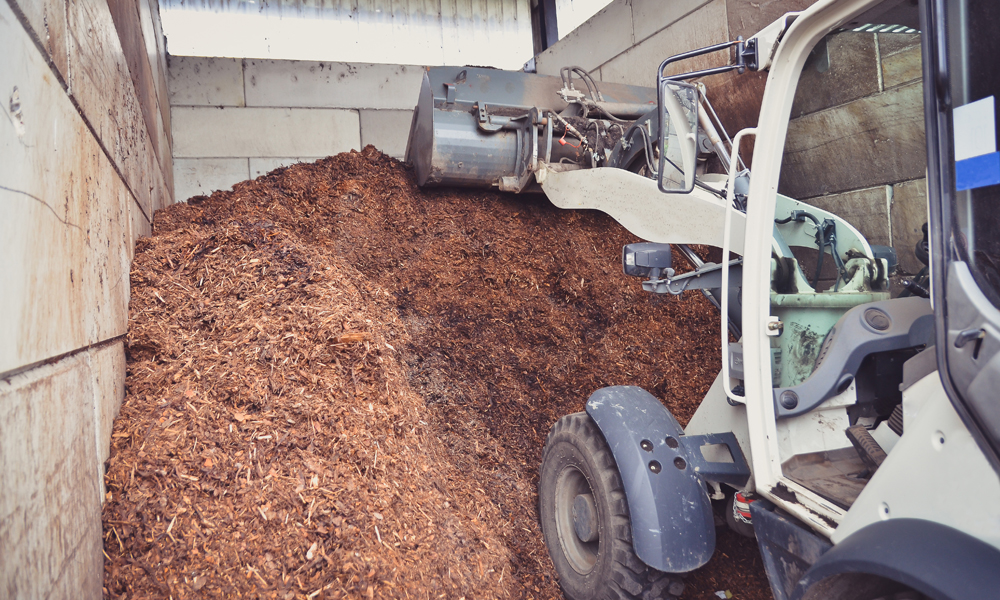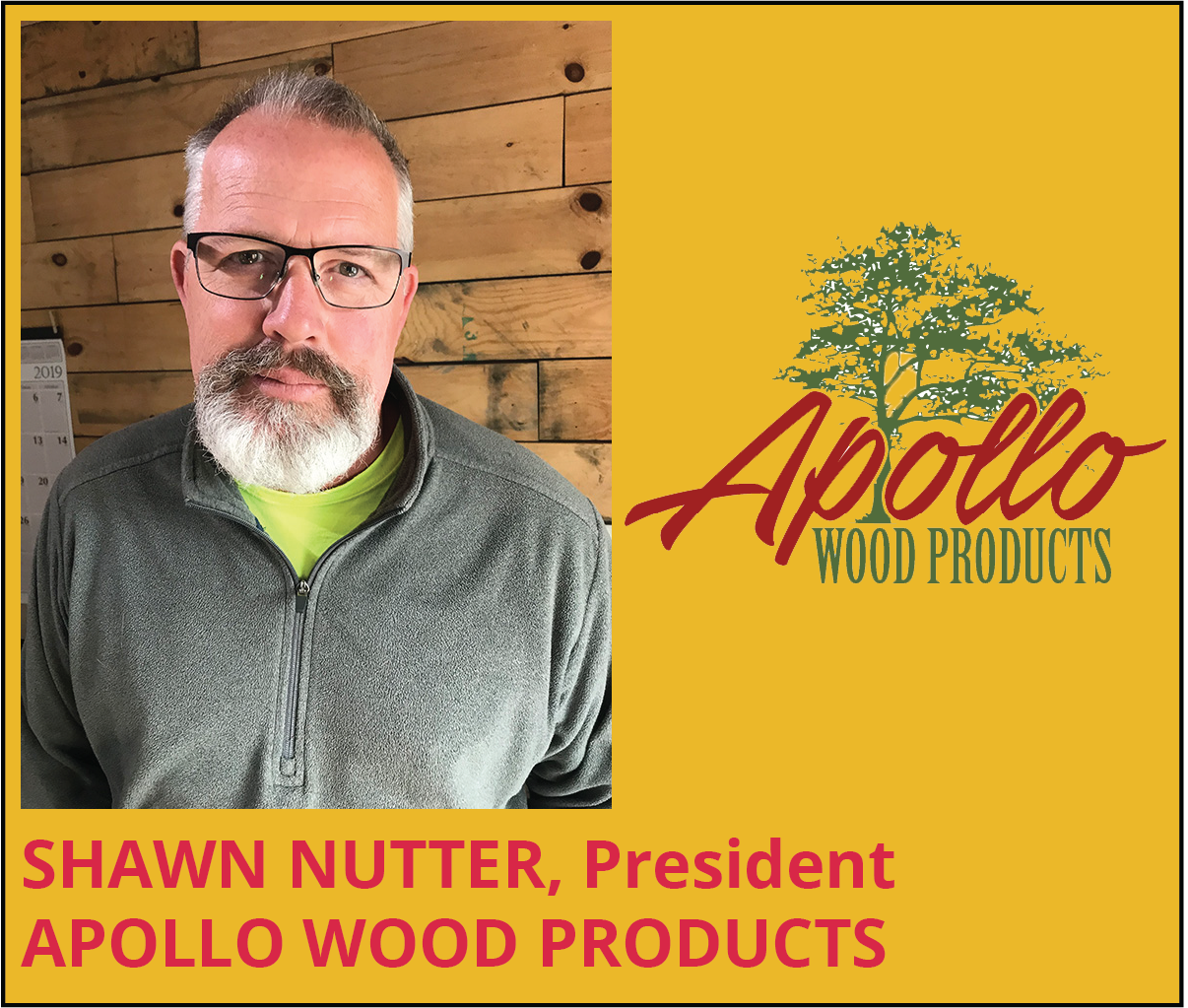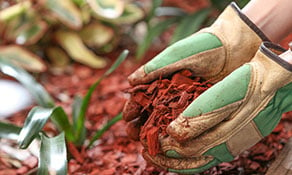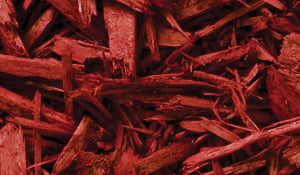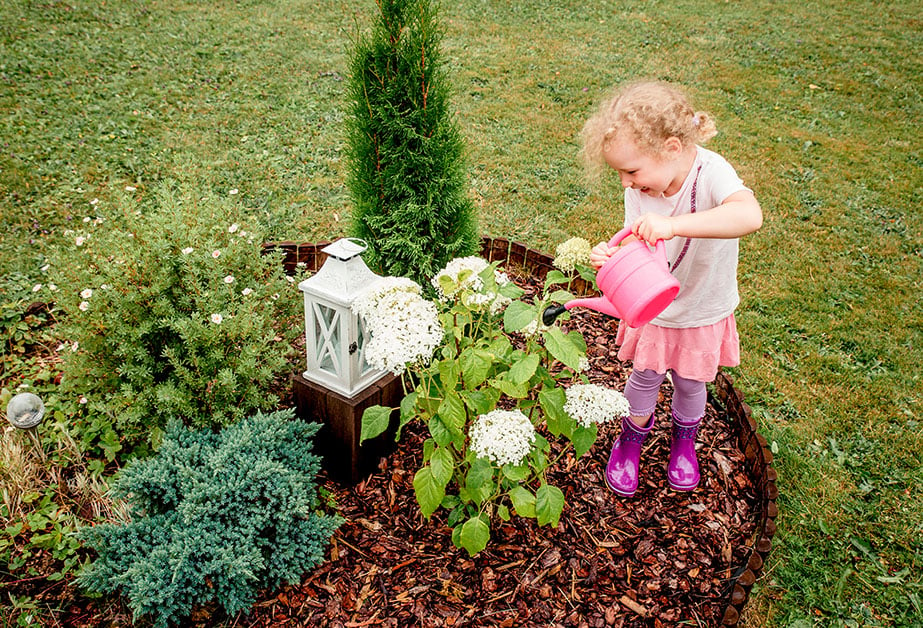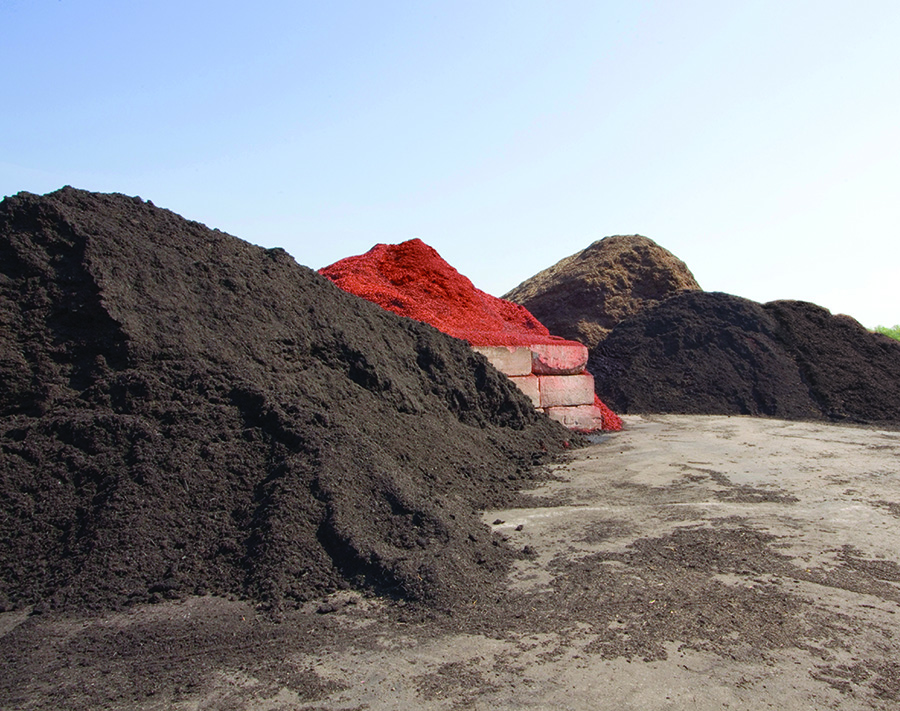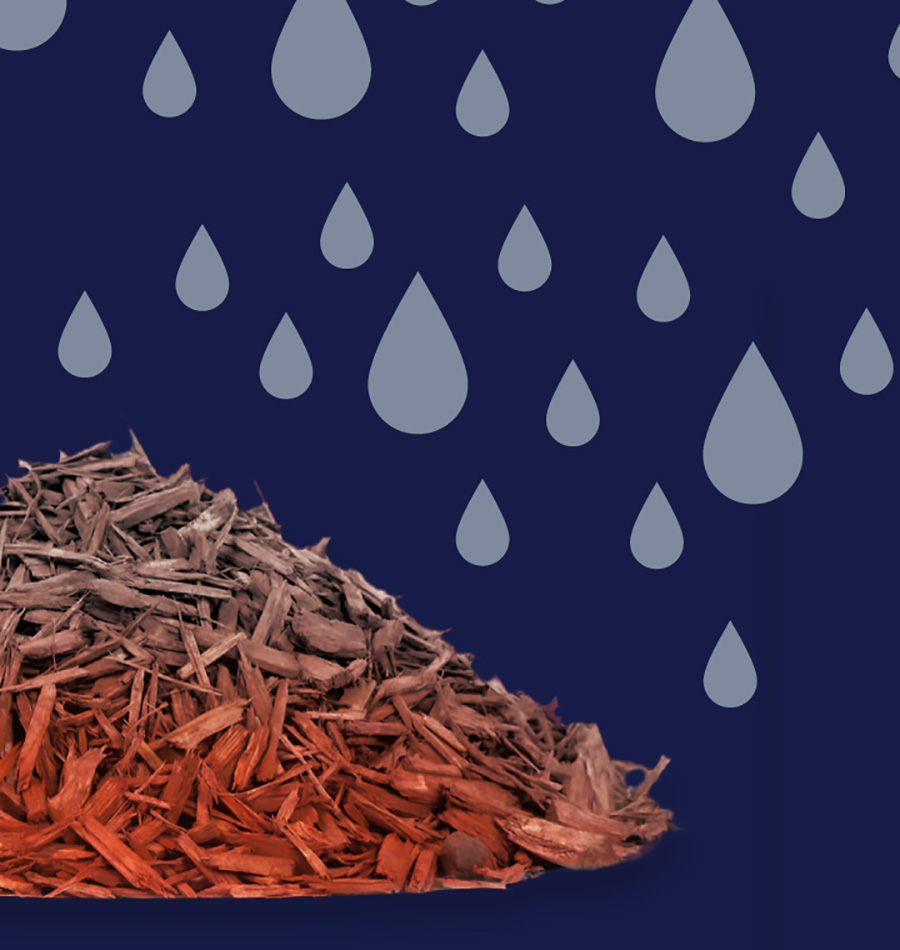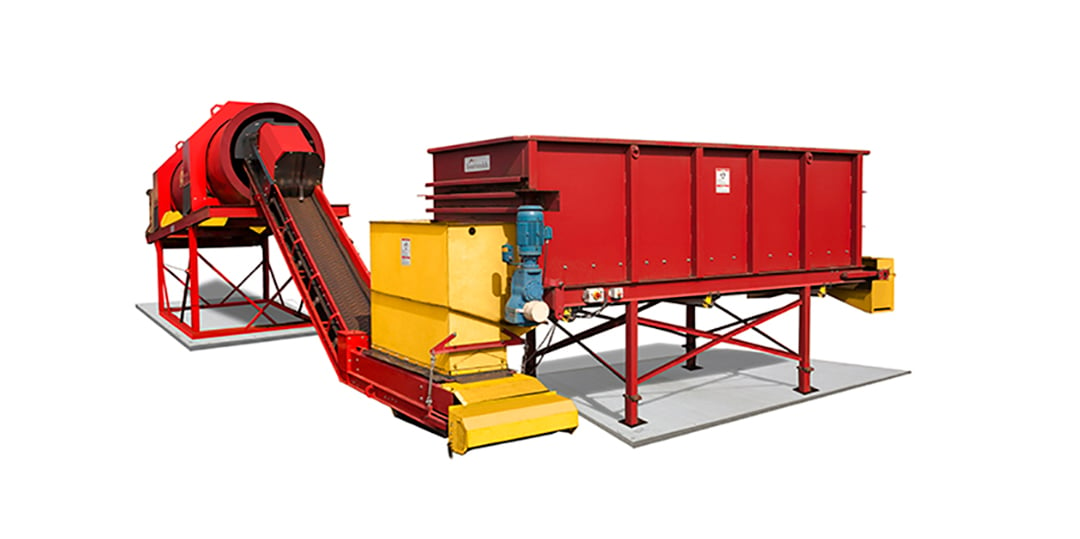Water conservation: How mulch creates new opportunities
Topics: mulch beds, reduce water usage rates, increase sustainability
Sourcing fiber is perhaps the single greatest variable in the mulch industry. Some producers routinely have trouble finding material, while others enjoy markets that are consistently flooded with cheap fiber. More and more these days, that cheap fiber comes in the form of green waste. While the influx of green waste has created opportunities in many cases, it has also brought disruption to the industry. That’s why mulch producers need to understand all of the issues surrounding green waste, including the true costs. Here are a few things every mulch producer should know about green waste mulch.
Topics: mulch colorant, green waste
Mulch, Fire Safety and the Myth of Spontaneous Combustion
Topics: mulch fire, fire safety, spontaneous combustion, mulch piles
Hesitation gives way to sustained
success for colored mulch producer
When Shawn Nutter bought Apollo Wood Products in 2014, he didn’t see much of a need for colored mulch products. But success would quickly change his mind.
The colored mulch market had been relatively slow to mature in southern California and there were already several competitors producing colored mulch in the area. As a result, Nutter didn’t even take the wrapper off his new ColorTrom machine for the first few months.
Topics: mulch colorant, mulch coloring equipment, casestudy, apollowood
Choosing colored mulch for your next project is a great way to add beauty to your landscape design while improving the health of your soil and plants. But you can’t just throw some mulch down and expect everything to be perfect. To get the best results, you need to take a little time to prepare your mulch beds properly. Here’s how to do it, plus some tips on how to take care of your mulch once it’s installed.
Topics: mulch colorant, mulch beds
What is colored mulch?
Colored mulch is wood, often scrap wood or recycled wood product, that is dyed with iron oxide or carbon-based pigment to produce vibrant reds, browns, blacks or other unique colors. Colored mulch is safe, environmentally friendly and can provide a boost of color to any landscaping design.
Topics: mulch colorant, mulch beds, mulch calculation, mulch safety
Mulch colorant safety: Protecting people and plants
Whether you’re buying a new car for yourself or a small toy for one of your kids, personal safety is a major concern for any consumer. The same is true when it comes to colored mulch. Mulch producers, landscapers and home owners alike all want to know the product they’re using is safe. That’s why mulch colorant manufacturers like ChromaScape put so much care into crafting products that are safe for people, pets and the environment. Let’s explore some common safety concerns to see why colored mulch is a fun, decorative and safe addition to any landscaping project.
Topics: mulch colorant, mulch beds, mulch colorant safety
Coloring system calibration: The key to increasing profitability
Managing any business can feel like you’re trying to juggle 100 bowling balls at once. From devising sales strategies and marketing plans to managing daily operations, there are a lot of things you need to keep your eye on to ensure success. But for mulch producers, there’s one process in particular that could make or break your company’s profitability: proper system calibration. Let’s look at why having exactly the right amount of water and colorant in your coloring system can make the difference in keeping your company in the black.
Topics: colorant calibration, water calibration
“Spring wash” is what happens when colorant product washes away due to high moisture levels, typically during the spring season. Even the highest-quality mulch colorant can experience washing if the colorant isn’t fully dried.
Topics: mulch colorant, spring wash
Landscaping may be a seasonal industry, but the mulch business operates on a more fluid calendar. Some mulch producers choose to shut down their coloring operations in the winter months, particularly in northern climates. Others forge ahead, coloring, bagging and shipping product all year long. In either case, when the weather turns cold, you need to take extra steps to protect your equipment or you could end up facing some costly repairs. To save money and keep your operation running smoothly, here are some tips on how to winterize your mulch coloring equipment.
Topics: mulch colorant, mulch coloring equipment, winterizing equipment
